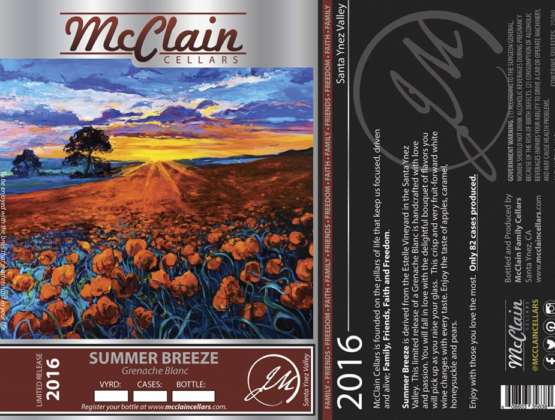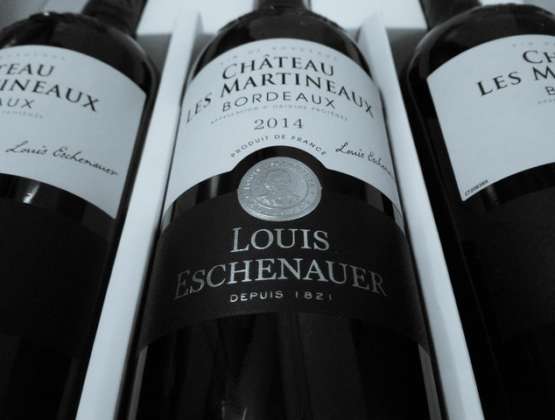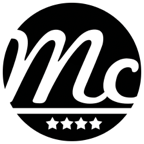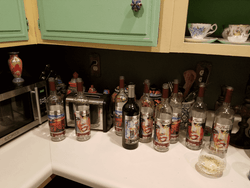The writing on a wine label can be quite intimidating for beginner wine drinkers. Trying to figure out what all those terms and symbols mean can seem difficult. Let me assure you though, all that sophisticated sounding language can easily be broken down. If you want to read a wine label like a pro, you simply need to interpret a few specific words and phrases. Besides impressing your family and friends, it will enable you to learn about each wine and pick the best wine suited for the occasion.
Here are the top five parts of a wine label you’ll commonly see and how to interpret them. I will list them first and then go over each in detail!
- Wine Producer or Bottler
- Region and/or Country of Origin
- Vintage
- Variety or Wine Name
- ABV
Wine Producer
One of the most prominent aspects of the wine label you’ll notice is the wine producer. More often than not, it is printed on the top of the label in large text. It may also appear at the bottom in bold, dependent on the label style. So, this obviously indicates which winery or production company made the wine. Some mainstream wines, however, only have a brand name and don’t indicate the producer. Usually, this is because it comes from a very large wine manufacturer that makes multiple labels.
Region
Location, location, location! You’ll likely notice a location printed just below the wine producer. It may offer a broad, overall region like California or a more specific vineyard. I have found that the more specific the region oftentimes, the higher quality the wine is. Over time, you may learn what regions you prefer your grapes to come. This is extremely helpful in determining your wine preference. As your probably aware, it will be far easier to find wines closer to your region than from overseas or farther away.
Vintage
The vintage date is simply the year when the wine was produced. It’s usually displayed boldly and can be found near the top or center of the wine label. Occasionally, you may see it on the neckband of the bottle. The older the vintage, generally, the richer the flavor will be since it has had a long time to age. If you notice a wine with no vintage it may be because it has a mixed vintage or it was mass produced.
Variety
The variety of the grape is potentially the most important thing when selecting a wine. This is the type of grape used in making the wine such as merlot or pinot noir, for example. Wine flavors vary widely depending on what type of grapes are used in their production so knowing the variety will help in your decision to purchase a wine. Some wines also use a grape blend, in which case you may see the phrase “red blend” or “white blend.” Like ours, others will list the specific blend on the back. For example, such our 2016 Summer Breeze which is an 80% Grenache Blanc, 15% Loureiro, and 5% Viognier blend.

If you are looking at a European wine, you may not see a variety but instead an appellation. This is due to wine production regulations in certain countries. If you don’t recognize the appellation, you can do a search on your phone to get an idea of what types of grapes are used in that area. Eventually, you’ll start recognizing appellations and even know how they taste!
ABV
Regardless of what type of wine you are purchasing, most bottles will display the ABV (alcohol by volume) rate at the bottom. Also known as the alcohol content, the higher this percentage is, the more alcoholic the wine is. Alcohol rates can range widely so I suggest looking at this first and foremost when selecting your wine. Most wines will range somewhere between 7% and 23% with dessert wines being on the higher side than dry wines.
Note: Often abbreviated as ABV, abv, or alc/vol
With all the fancy designs and complex wording, it’s easy to become overwhelmed but these are the five basic parts of a wine label. I will add that there are other terms, phrases, and symbols you could see on some wine labels depending on where the wine is from and how old it is. Start with these basics though and then move on to learning the rest. Visit your nearby fine grocer to practice reading the wine labels. Attending a wine tasting event is even better though so that you can read the labels and taste the wine so you can start matching the flavors to the variety and region.
If you live in or are visiting the Orange County, CA area, we invite you to join us for one of our wine tasting events!
Cheers!






